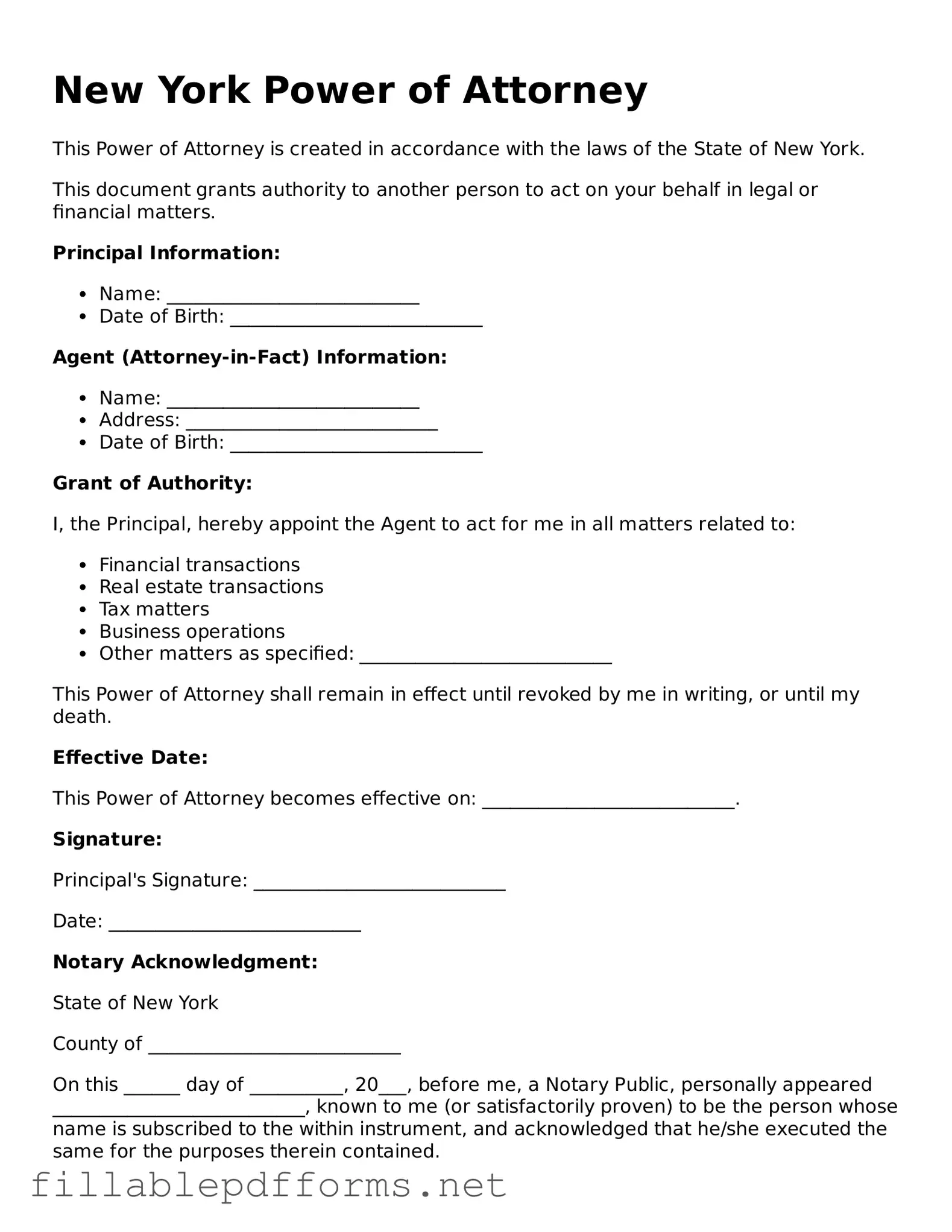Attorney-Verified Power of Attorney Form for New York State
A Power of Attorney form in New York is a legal document that allows one person to grant another the authority to act on their behalf in financial or legal matters. This powerful tool can help manage affairs when someone is unable to do so themselves, whether due to absence, illness, or other reasons. Understanding its use and implications is essential for anyone considering this option.
Launch Editor Here
